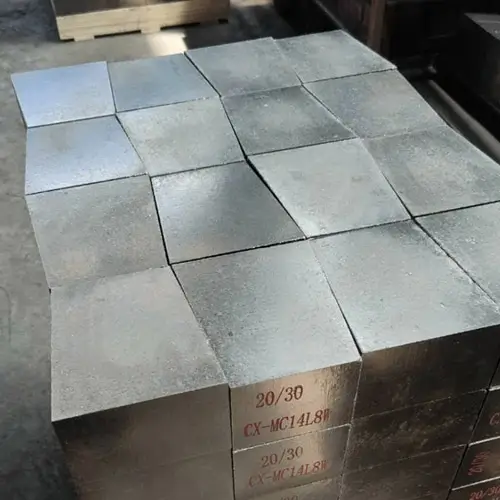Step-by-Step Guide to Making Fire Bricks
The manufacturing process of fire brick is similar to ordinary bricks. The usual steps are:
1.Digging
2.Weathering
3.Tempering
4.Moulding
5.Burning
Fire bricks are produced from fire clay. The burnings are carried out in a superior type of kiln under carefully graduated temperature control. Processes of burning and cooling are kept rather slow.You can make fire bricks with just a little time and skill. A particular type of cement called refractory cement is used to make fire bricks. You can purchase refractory cement from us.If you want to know how to make refractory cement, welcome to view.There are mainly three varieties of refractory bricks. Acid Refractories,Basic Refractories and Neutral Refractories.
How to choose different refractory fire brick?
Lighter, more porous, soft refractory bricks can withstand higher heat and absorb less energy than harder bricks. These bricks are less dense and insulate better, but they cannot be used to store heat. Hard refractory bricks are best used around open flames and are more likely to absorb heat. They are used when extreme heat is needed.Once the clay content is determined, the fireclay is formed into shapes. Firebricks are typically made by pressing or extruding the clay into the desired shape. They’re then put into a kiln with a carefully monitored temperature control until they reach the desired hardness.
Refractory bricks are different from the bricks used to build a house or steel making. There are differences even among refractory bricks as far as whether they’ll be used for a kiln, fireplace or furnace. Make sure you choose the right kind of refractory brick for the job it will be used for.
What is refractory fire brick?
Refractory bricks are also known as firebrick or fire brick. Refractory bricks or fire bricks are the type of bricks which can withstand high temperature as a construction material. A fire brick is a block of refractory ceramic material used in lining furnaces, kilns, fireboxes, and fireplaces. A refractory brick is designed mainly to withstand high heat, but should also usually have a low thermal conductivity to save energy. Usually dense bricks are used in applications with extreme mechanical, chemical, or thermal stresses, such as the inside of a wood-fired kiln or a furnace, which is subject to abrasion from wood, fluxing from ash or slag, and high temperatures. Kiln bricks are made by firing a clay based composition in the kiln until it is partly vitrified, and for special purposes may also be glazed. Refractory bricks usually contain 30-40% alumina and the primary raw material is usually chamotte with other materials. The maximum service temperature increases with increasing alumina content and kiln bricks can be obtained with an alumina content of 80% and above.
In other, less harsh situations, such as a natural gas fired kiln, more porous bricks are a better choice, usually referred to as Insulation Bricks. They are weaker, but they are much lighter, easier to form, and insulate far better than dense bricks. In this case they have a low thermal mass and so cannot be used to store heat. Insulation bricks have a better thermal shock resistance than dense firebricks but the main disadvantage is their low strength. The insulation property of these bricks usually comes from perlite or vermiculite. As with the dense refractory bricks there is a range of grades corresponding to different maximum service temperatures. The most common is Grade 23 – 1260oC.
What are refractory bricks for steel making?
Tar-bonded dolomite bricks and magnesia carbon bricks are the most commonly used refractory materials. Asphalt and dolomite bricks are mainly used as facing materials in the steel industry.
How is refractory fire brick made?
Kiln bricks are made by firing a clay based composition in the kiln until it is partly vitrified, and for special purposes may also be glazed. Refractory bricks usually contain 30-40% alumina and the primary raw material is usually chamotte with other materials.
What are the raw materials for fire bricks?
Refractory Raw Materials: Fire clays of both plastic and non-plastic varieties, refractory grog (broken fire bricks) and other high alumina minerals like kyanite, sillimanite and bauxite are the raw materials for making fire clay bricks and blocks.
How many types of refractory bricks are there?
Bauxite, Magnetite, and Dolomite bricks are the three types of basic refractory bricks. Magnesite bricks are ideal for lining furnaces because they contain 3 to 5% iron oxide and 85% magnesium oxide. Dolomite bricks have a higher capacity of withstanding temperatures of 1400 to 1600 degrees.Through this article, gain an in-depth understanding of how firebricks are manufactured. Learn more about the product advantages and process of refractory fire bricks. On the other hand, if you want to see the process of making refractory bricks, welcome to visit our factory anytime.

